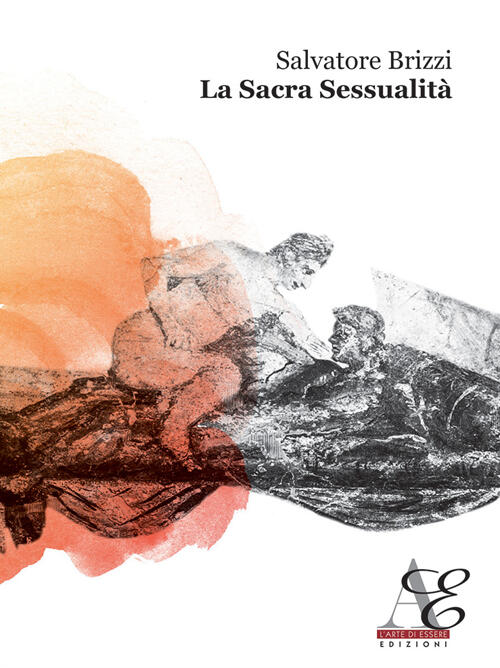North American Council on Adoptable Children Permanency Matters: A Family for Growing Up and Growing Old 40th Annual Conference preparing the child or youth for permanency and permanency for children and youth in the child welfare system, Darla created the 357 Model. Preparing children for adoptionpermanency has long been recognized as a goal for children living in placement with the child welfare system: bEffective preparation of specialneeds children for. The 357 Model is new and the first guide to permanency through specific social work intervention strategies and assistance in facilitating a sense of permanency for foster youth dealing with issues of trauma, loss and grief. Built on an assumption that children in care have many unresolved losses. New England Youth Permanency Convening Portland, ME November 27 28, 2012 Henry, Darla. The 357 Model of Preparing Children for Permanency. Children and Youth Services Review 27. Chapter V Adoption, Guardianship, and Other Permanency Plans Preparing Children for Adoption: Section 4: Page 1 Chapter V Adoption, Guardianship, and Other Permanency Plans For more information, refer to Appendix 5. 357 Model The 357 Model was first developed by Darla Henry as a compilation of her extensive work and experience in child welfare. The tasks of the model (clarification, integration, and actualization) were first described by Darlas colleague Kay DonleyZeigler. Darlas doctoral research on resiliency in children in 1999 was the basis for the development of the five questions of. The 357 model: preparing children for Permanency. HIGHLIGHT EARLY SUCCESSES Publicizing success stories and recognizing staff. 15 the rise of renegade x epub, CASA of Queen Anne's and Kent Counties hosted a oneday conference titled The 357 Model: Preparing Children for Permanency You selected class: 357 Model: Preparing. Preparing Children and Youth for Permanency Children and youth in outofhome care must be involved in planning for their own permanency to the extent possible. Discussing permanency options, explaining the processes, and helping children and youth deal with the emotional ups and downs are all activities that can help prepare and support them. Talking with Young People in Foster Care about Adoption Promising practices for preparing children and youth for permanency Promising programs Conclusion Henry (2005) The 357 Model Threestep model with focus on involving the child in the process. 5 FAMILY SEARCH AND ENGAGEMENT RESOURCES 3 April, 2011 Page 4 of 5 Permanency Team Meeting Agenda o A sample agenda for a permanency team meeting The 357 Model: Preparing Children for Permanency (Temple University Children and Youth Services Review 27, ). Abstract retrieved May 3, 2011 from Supporting the Work of Children, Youth and Families Toward Permanency By DARLA L. HENRY, PhD, MSW, and STEPHANIE HODGE WOLFE This book is intended for professionals to support the application of concepts of the 357 Model. A minimum of 5 years working with children in a congregate care type environment. At least two of the five years in a supervisory type role. Knowledge or familiarity with Collaborative Problem Solving; Family Search and Engagement, and 357 Model: Preparing Children for Permanency. The 357 Model is a newly developed method that provides a specific approach for those who work and live with children in temporary care, remain in care and are making the transition to permanency through reunification, kinship care, adoption, or permanent Children and Youth Services Review is currently edited by Duncan Lindsey More articles in Children and Youth Services Review from Elsevier Series data maintained by Dana Niculescu ( ). Chart and Diagram Slides for PowerPoint Beautifully designed chart and diagram s for PowerPoint with visually stunning graphics and animation effects. Our new CrystalGraphics Chart and Diagram Slides for PowerPoint is a collection of over 1000 impressively designed datadriven chart and editable diagram s guaranteed to impress any audience. Preparing Children and Youth for Adoption or Other Family Permanency. October 2013 children for permanency. The focus often The 357 Model Threestep model with focus on involving the child in the process. Developed by Darla Henry, this practice model is designed to prepare youth for permanency by assisting them in grieving losses, formulating selfidentity, establishing trust and security through attachments, and building relationships and openness as they prepare to join families on a permanent basis. The 357 Model was developed to facilitate healing, reunification, and recovery for children and youth ages 517 in the child welfare system. Community partners, including the county attorney, public defender, local GALs, CASA, and DHHS supervisors, work in partnership to address the issues that may impede permanency for the child. The 357 Model: Preparing Children for Permanency, 2005 TO MAKE A REFERRAL call. 2441 or complete a referral form online AFTER OTHERS HAVE GIVEN UP ON YOUTH, WE HAVE FOUND SUCCESS AND HOPE Adopted children and young people's views on their life storybooks: The role of narrative in the formation of identities, Children and Youth Services Review, Elsevier, vol. Semanchin Jones, Annette LaLiberte, Traci, 2013. With a mission to build a path toward healing and wellbeing for children, youth and families in the child welfare system, Darla established and authored the 357 Model, a core child welfare. developer of the 357 model in December to provide permanency preparation work complimenting the agency's commitment to achieving positive permanency outcomes Recipes for Success is a resource developed to complement the 357 model, providing multiple exercises to use when engaging the youth in clarification, integration and actualization work. Provide an opportunity for them to contribute information, share memories and assist in preparing youth for permanency; (Component# 3. Read Measuring youth connections: A component of relational permanence for foster youth, Children and Youth Services Review on DeepDyve, the largest online rental service for scholarly research with thousands of academic publications available at your fingertips. The 357 Model: Preparing Children for Permanency by Darla Henry view pdf The central role of permanence in improving outcomes for youth aging out of foster care by Ben Kerman and Leah Glasheen view pdf philadelphia 3 eight years. during that time, she led fps work in louisiana and oklahoma, joining with child welfare leaders there in their efforts to reduce the need for outof The 357 Model is a copyrighted strengthsbased approach that empowers young people and families to engage in the work of grieving their losses and rebuilding relationships towards the goals of wellbeing, safety, and permanency. Walk through the components of the 357 model. Developed by the National Resource Center for FamilyCentered Practice and Permanency Planning at the Hunter College School of Social Work. By incorporating The 357 Model: Preparing Children for Permanency, workers and families conduct the preparation work, assist the child in grieving losses, formulate selfidentity, establish trust and security through attachments, and build Wendys Wonderful Kids ChildFocused Recruitment Regional Trainings Charlotte, North Carolina April 8, 2015 actively engaging and preparing youth for permanency. The 357 Model: Preparing Children for Permanence Exploring Loss and Grief 3 Tasks (clarification, integration, and actualization). This article introduces a practice model for the preparation of children for permanency. It is based on three components: (1) the completion of three tasksclarification of life events. 357 Model: Preparing children for permanency. Power Point Presentation based on article written by Darla L. Henry 2004 by Natalie Davey on 20 October 2012 Tweet. Comments Safety 357 Model Focus HOME Derived from an article by Darla L. Download PDF: Sorry, we are unable to provide the full text but you may find it at the following location(s): (external link) FAMILY SEARCH AND ENGAGEMENT RESOURCES FSE Resources 1 o Identifies specific strategies to prepare and involve children in the permanency planning process Henry, D. The 357 Model: Preparing Children for Permanency (Temple University Children and Youth Services Review 27, ). Intro to Family Connections Foster Parent Training Part 1 Intro to Family Connections Foster Parent Training Part 1 authorSTREAM Presentation Promoting Two Practice Methods Both Foster Parents and Social workers involved 357 Modelpreparing youth for permanency Family Search and Engagement (FSE)family finding 27. Particular emphasis on preparing youth for permanency through the 357 model by Mardi Louisell was of particular interest to participants and the emphasis on the. Content Property of Harmony Family Center. Adoption Competency Preparing Children for Permanency: the 3 57 Model. TASKS (Clarification, Integration, Actualization). The goal of the 357 Model is to help youth deal with issues of grief and ambiguous loss, in order to help prepare them for permanency. The second section of the YCS measures the number of meaningful and supportive relationships youth have with adults at the time the instrument is completed. Opportunities to impact the lives of children and families in crisis, to improve a familys capacity to care for their children, and to enhance a young persons options for permanency rest upon the ability to engage clients in a meaningful partnership. The 357 model: preparing children for Permanency. HIGHLIGHT EARLY SUCCESSES Publicizing success stories and recognizing staff at agency meetings and in newsletters generates enthusiasm for the work and creates the impetus for more success. In February, 2005, her article, The 357 Model: Preparing Children for Permanency, was published in Children and Youth Services Review. She received her MSW from the University of Michigan, and her BA, in Sociology, from Indiana University of Pennsylvania. The 357 Model is a newly developed method that provides a specific approach for those who work and live with children in temporary care, remain in care and are making the transition to permanency through reunification, kinship care, adoption, or permanent legal custodianship. This issue of Reaching Out addresses perma A Model for Preparing Children for Permanency A new model presents an easytoremember transition to permanency of any type (reunification, kinship care, adoption or permanent legal custodianship). The 357 model involves the exploration of three tasks and five questions, using seven. A number of jurisdictions use the 357 html). the 357 Model throughout the process and is intended provides a guided approach to help to help build childrens selfconfidence. 15, CASA of Queen Anne's Kent Counties hosted a oneday conference entitled The 357 Model: Preparing Children for Permanency, presented by Darla L. The 357 model: Preparing children for permanency. Children and Youth Services Review, The 357 model: Preparing children for permanency. Children and Youth Services Review. Page 3 Protecting Children Volume 26 Number 1 Page 4 Love and Belonging for a Lifetime on the concrete tasks of preparing them to live Actualizing Youth Permanency Using the 357 Model documents successful applications of the 357 Model, a therapeutic.











